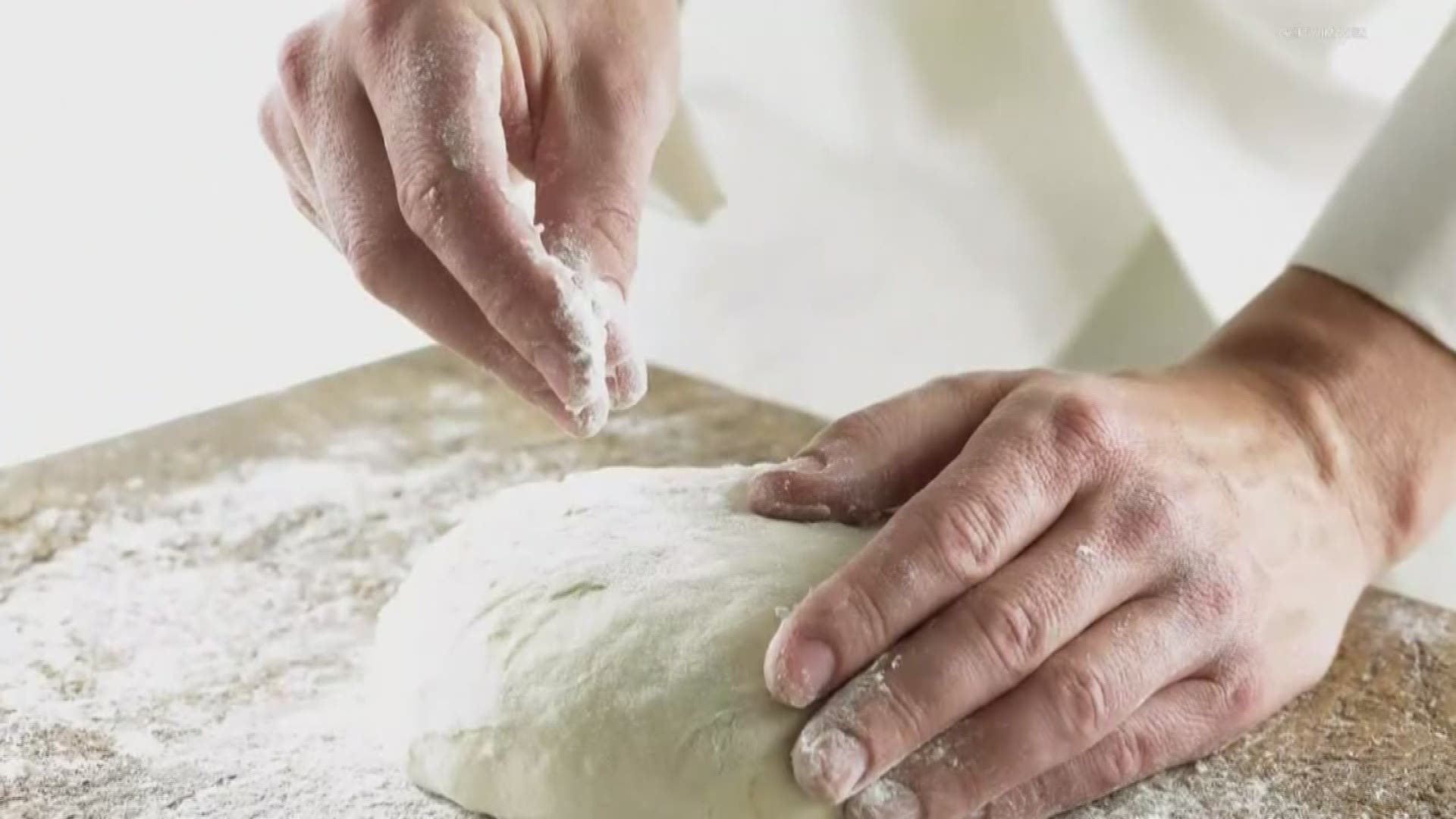MINNEAPOLIS — Breadmaking master tips from a restaurant chef
As we're holed up inside, lots of people are trying their hand at baking right now. Specifically, bread seems to be popular on social media posts.
But not all of us are experienced at this. So we reached out to Ryan Cook, head chef at Eastside Eat + Drink in Minneapolis.
Tip 1: Master the basics
Cook cultured a sourdough bread starter base from scratch five years ago, and he’s still using the same one today.
This is the secret of sourdough, making your own yeast.
“It's kind of like learning an instrument,” said Cook. “First you learn a major scale and then you learn to arrange it into melodies. This is the same.”
Cook said to make a sourdough base just add one-part water to one-part flour. Let it sit out in your kitchen at room temperature for at least four days or until it starts to bubble up. The simple dough will capture the natural yeast carried in the air, and the yeast will begin to do its sugar-eating magic.
You can add this to your sourdough to make it rise naturally. Then, like a pet, you feed the starter more water and flour to keep that yeast active for as long as you want.
Cook’s favorite bread recipe comes from Tartine Bakery in San Francisco. You can see it here.
By mastering one base recipe, Cook said you can adjust it to make wheat, rye, sourdough, baguette, English muffins, whatever you want.
Tip 2 -- Master a brand of flour
“Always try to use the same flour [brand] to see how the flour reacts. If you are always using something different, you're never going to know. It helps so you dial it in,” said Cook.
As far as that all-purpose white flour in the cupboard, he says it’s good to bake with it to learn the quirks of mixing, leavening, kneading and baking the bread before you spend some extra dough on the organic, locally milled, higher quality flour products.
Tip 3: When rising your dough, go low and slow
Like a good soup stock, stew or smoked brisket, the key for flavor is to cook low and slow.
The same principal, according to Cook, applies to the dough of your bread.
Yeast work faster in higher temperatures and slower in cooler ones. If you are in a pinch, you could place your dough in a hot space—say above the oven—and it will rise much quicker than putting it in the fridge. But Cook says slow equals flavor.
“We stick it in the cooler and let it go long and slow for like 20 hours before we take it out and shape it and bake it. That long, slow fermentation period creates flavor,” said Cook.
Tip 4: Go a little longer in the oven
Different breads need different baking techniques, but generally speaking Cook recommends going a little longer than you think in the oven.
“You want to bake it out strong … because you want that nice crust on it,” said Cook.
Ryan cooks sourdough in a Dutch oven with the lid tight for the first 20 minutes in a 450-degree oven. He says this seals in the steam baking out of the dough and helps to keep the crust from burning. Then for the remaining 20 minutes, he pulls the cover off to crisp up the crust.
Final thoughts: Keep it simple, use good ingredients, practice and patience.
For some delicious bread recipes, check this out from USA Today.

